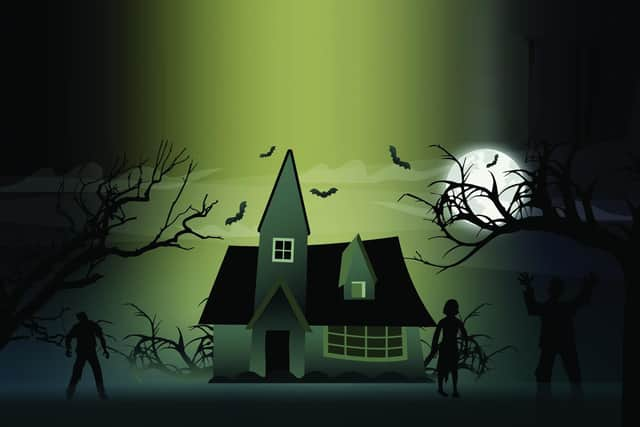Kirsty McLuckie: Spooking the housing market
Not mentioning the nuisance neighbours, a dodgy loft conversion or planning permission for an imminent build nearby could land you in court under the Property Misdirections Act.
However, in this week leading up to Halloween, what if the non-disclosure involved a slightly darker subject matter?
Advertisement
Hide AdAdvertisement
Hide AdA survey conducted in 2016 suggested that a third of UK buyers would be dissuaded from making an offer on a property if they found out that someone had died in the house.


But given the advanced age of the housing stock in this country, I’d say most places must have been the scene of a demise or two.
Aside from learning that a really grisly murder occurred in your chosen dream home – which might indeed be off-putting – I don’t see the problem.
However, there are a couple of houses in my area which could be considered spooky because of the fate of previous owners. Both of these dwellings might make superstitious buyers pause.
One, in the village, has been abandoned for decades. Tucked behind a wall of overgrown trees and shrubs, you can just see the roof of the once-fine Victorian villa set back from the road. Older residents explain that it belonged to a local family, the last of whom died abroad in the 1970s.
Presumably there have been disputes about the will, or just a disinterest from distant heirs, because the house has remained empty ever since.
A couple of years ago it was the subject of a YouTube video, made by an American couple of self-apponted “ghost hunters” who broke in and filmed the interior.
The upsettingly voyeuristic footage showed a collapsed staircase and water damage, but most of the rooms are surprisingly intact – albeit covered in bird droppings and dust.
Advertisement
Hide AdAdvertisement
Hide AdHauntingly, there remains music sheets on the piano and a chess set laid out mid-game on a table.
Another cottage, at the head of a loch and only reachable by a lonely six-mile single track road, was owned by friends of my parents.
Parts of it date from the 1600s and over dinner one night, the owners confessed to my mum and dad that, while renovating the property, they had dug up the kitchen floor and found what they thought might have been human bones – very ancient, but chilling all the same.
Fearing that if they informed the authorities their renovation would be halted by archeological investigations, they kept schtum, covered the bones back up in earth and laid their new floor on top.
The house was sold on about 20 years ago, and while most of us in the know about the story remained diplomatically silent, someone eventually informed the new owner.
Her reaction, fortunately, was one of delight. She understands that it is unlikely to be anything more sinister than a former resident who wanted to remain in the home they had loved. To her, a body under the floorboards – tall tale or not – adds to the charm of the house.
But she just might not disclose that unique feature in the brochure when it comes time to sell.
- Kirsty McLuckie is property editor at The Scotsman